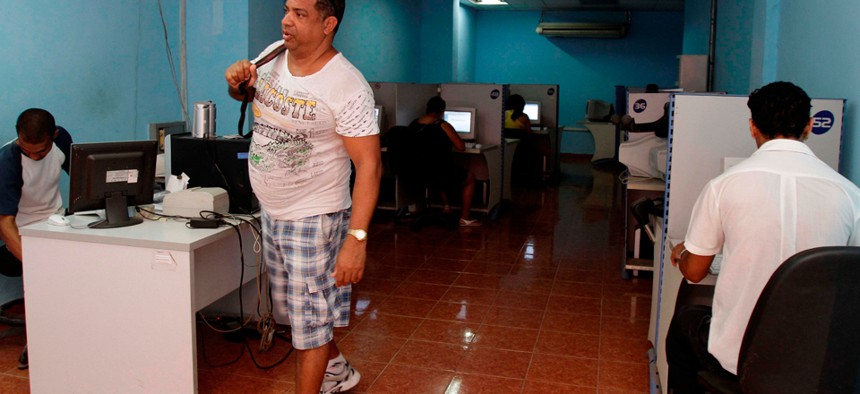The U.S. Government Secretly Built a 'Cuban Twitter' to Stir Dissent

A man leaves a state-run computer center in Havana in 2012. Franklin Reyes/AP file photo
USAID hoped the social network would grow enough to allow activists to organize 'smart mobs,' AP reports.
According to a new Associated Press report, the United States Agency for International Development covertly set up a communications network in Cuba designed to undermine the Cuban government.
Using shell companies and foreign banks, the network “sought to evade Cuba’s stranglehold on the Internet with a primitive social media platform.” The project was called ZunZuneo, slang for a hummingbird’s tweet, and was launched in 2009. By 2012, the network had vanished.
ZunZuneo’s organizers wanted the social network to grow slowly to avoid detection by the Cuban government. Eventually, documents and interviews reveal, they hoped the network would reach critical mass so that dissidents could organize “smart mobs” — mass gatherings called at a moment’s notice — that could trigger political demonstrations, or “renegotiate the balance of power between the state and society.”
USAID spent an estimated $1.6 million in government funds on ZunZuneo, and concealed its government origins by setting up companies in Spain and the Cayman Islands, and recruiting employees without disclosing the connection. “There will be absolutely no mention of United States government involvement,” said one 2010 memo.
Read the full story at TheWire.com.





